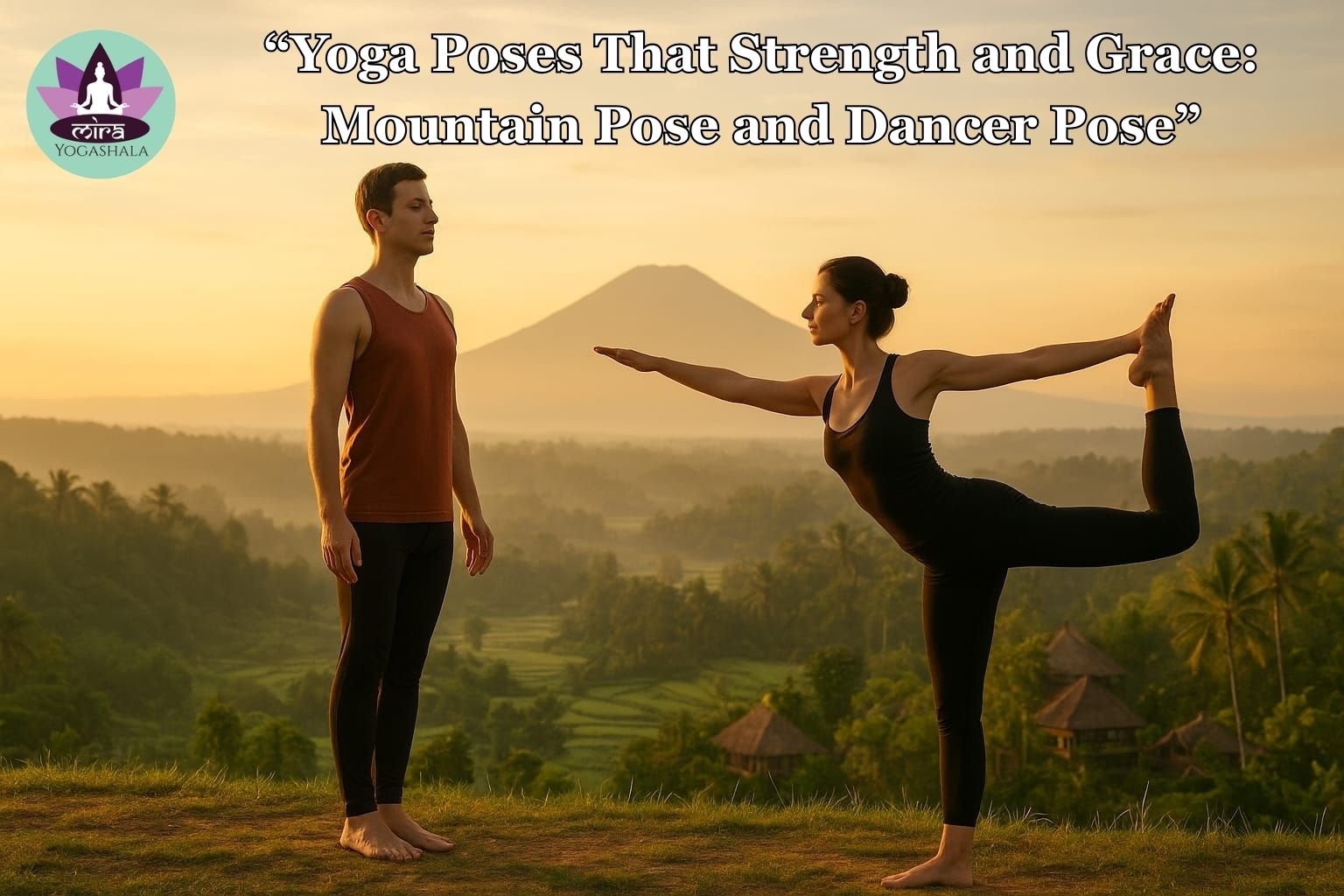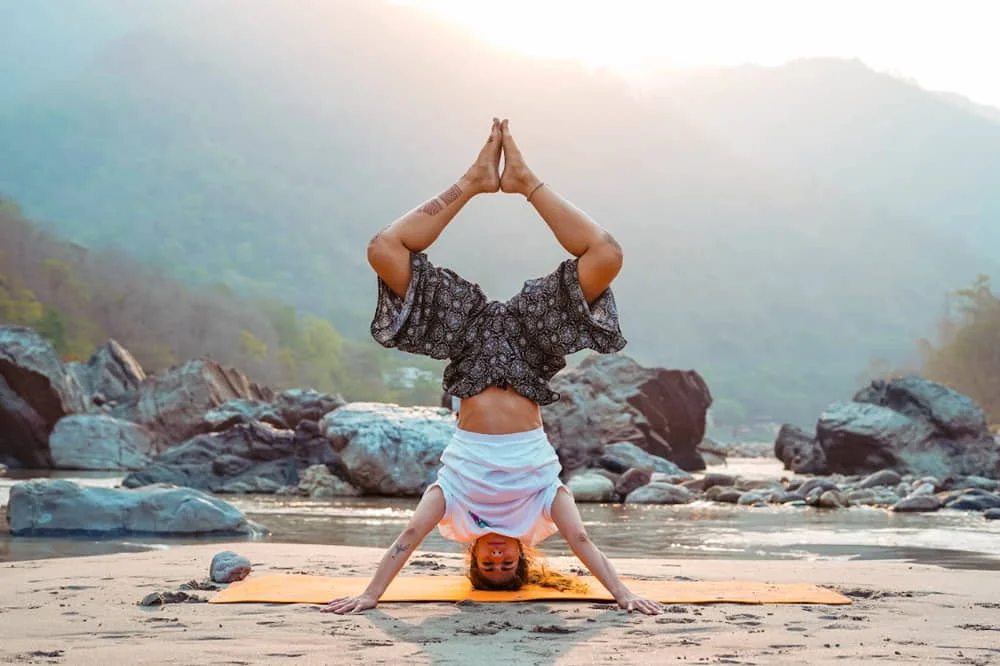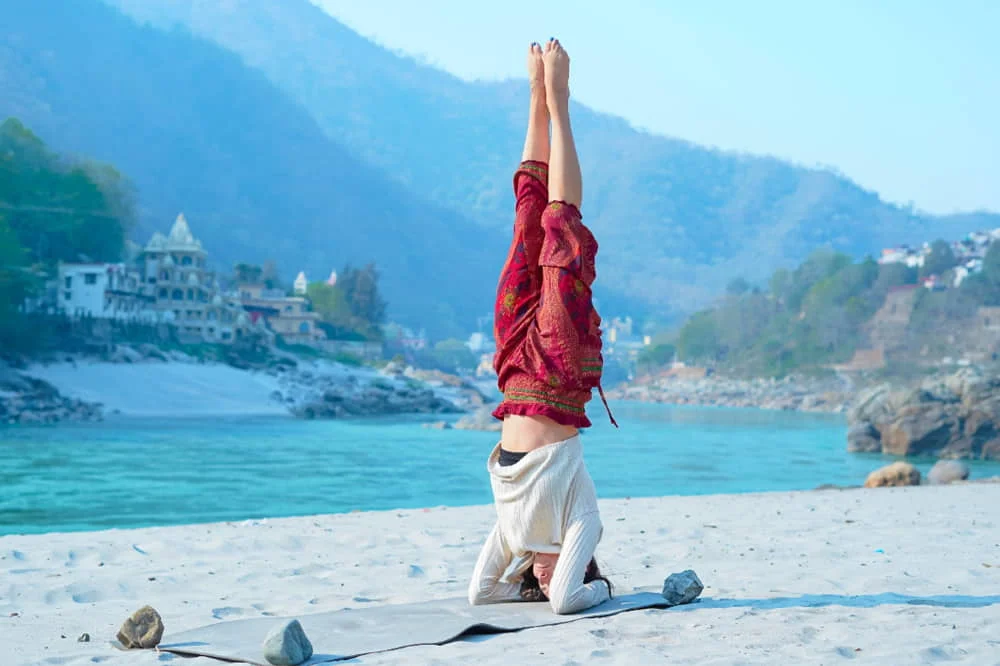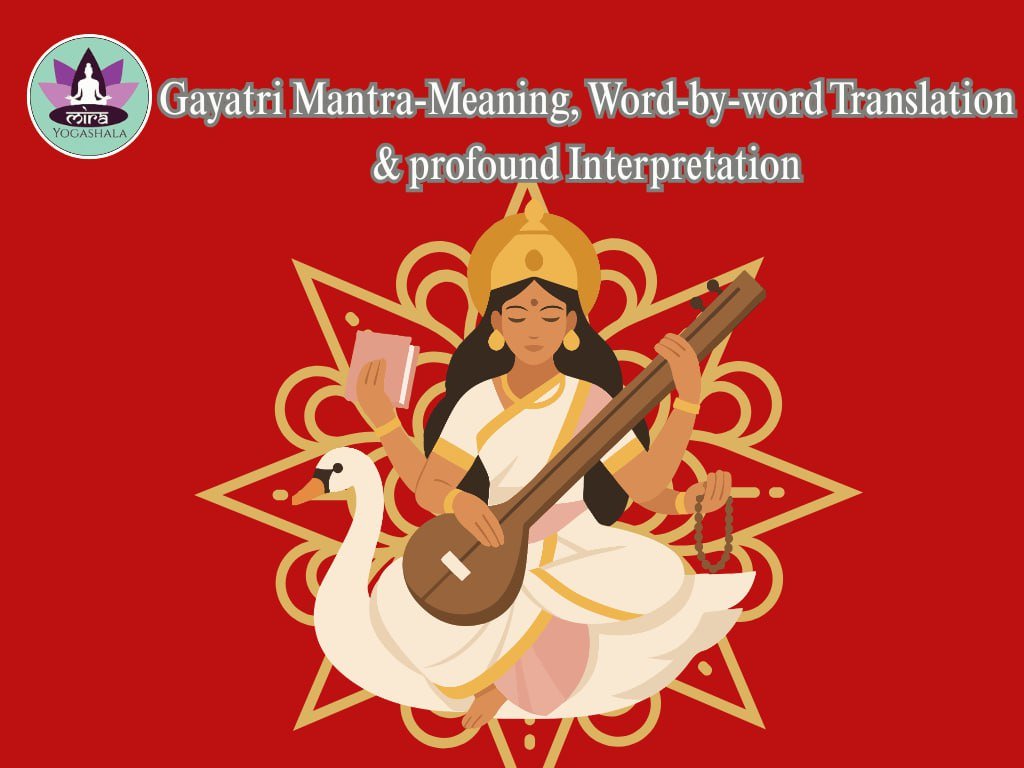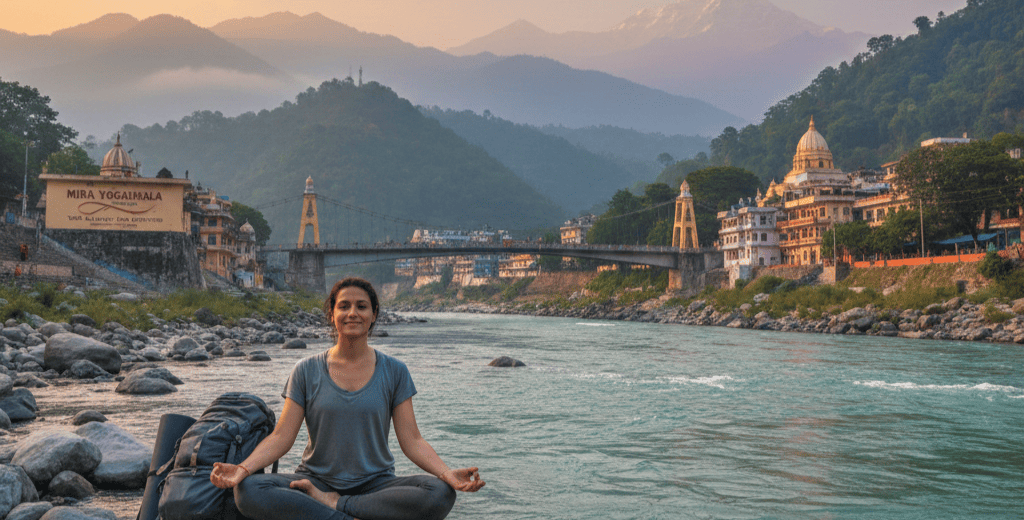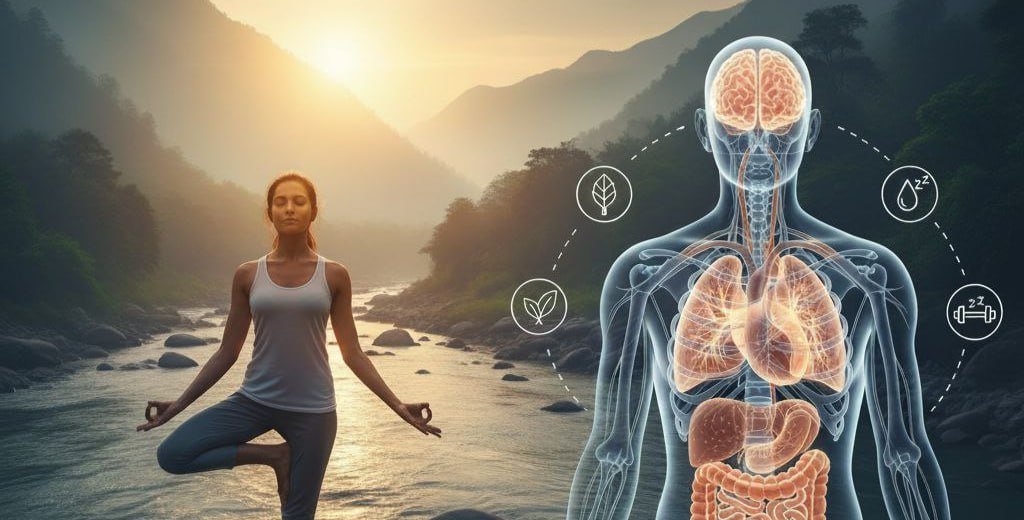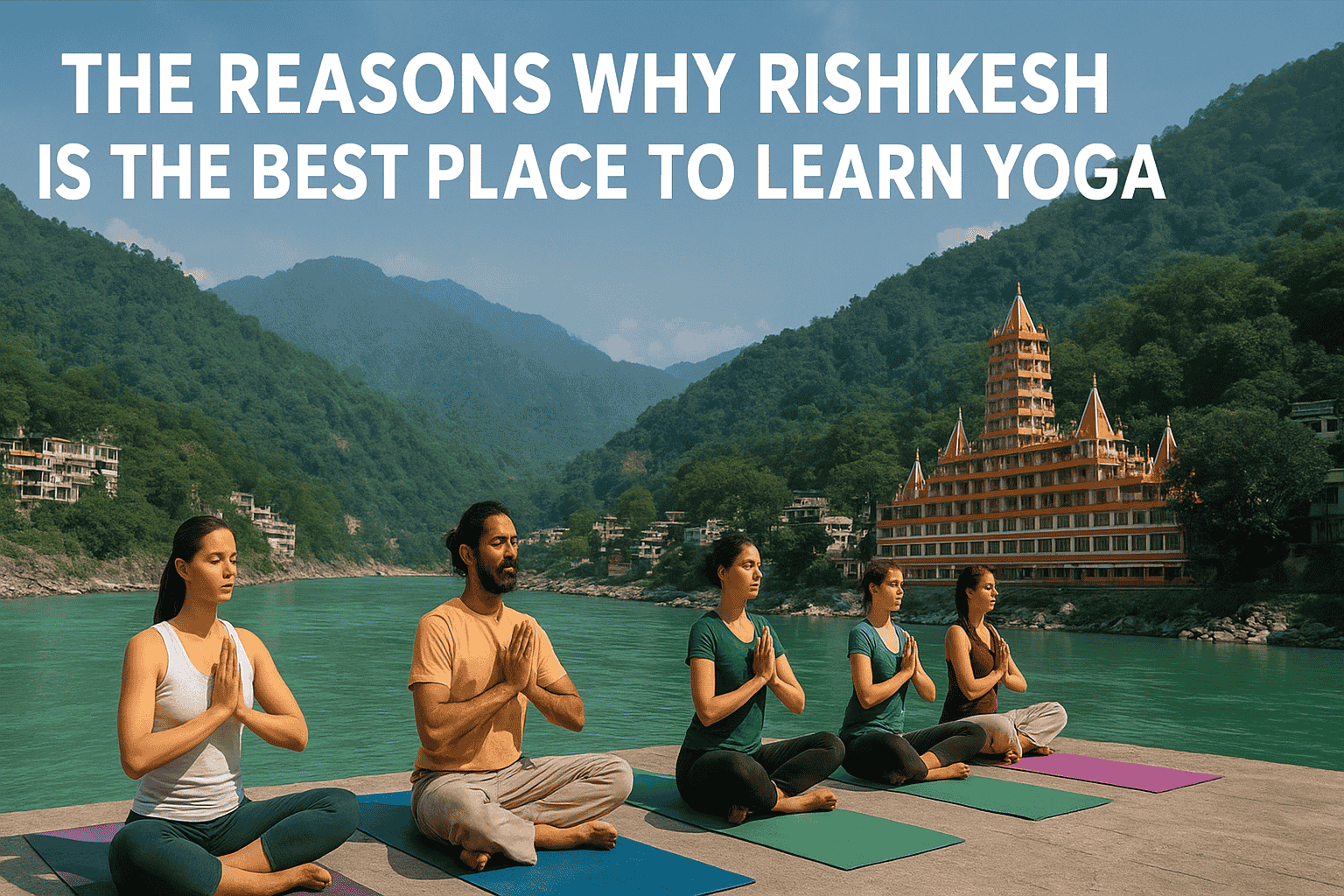Introduction of Yoga Poses
Yoga poses extend beyond exercise. They offer a clear, direct way to connect breath, body, and mind. Among hundreds of yoga poses, in fact, some serve as key foundations for others. For example, Mountain Pose (Tadasana) and Dancer Pose (Natarajasana) exemplify these core postures.
Mountain Pose cultivates awareness, grounding, and stillness. Despite its simplicity, it embodies the mountain’s stability and strength. In contrast, Dancer Pose radiates elegance, openness, and balance. Together, these yoga poses embody the duality of yoga: a balance between steadfastness and fluidity.
With that in mind, let’s smoothly transition into a thorough discussion of both yoga poses—covering their definitions, steps, benefits, variations, and key considerations during practice.
Join our courses.
Mountain Pose (Tadasana)
The Story Behind Yoga Poses: Mountain Pose (Tadasana)

Tada means “mountain,” and Asana means “pose” in Sanskrit. Therefore, Tadasana, then, is the actual Mountain Pose, a stable and erect position. Samasthiti, or equal standing, is another name for it.
Since it is the starting point for the majority of standing poses, consequently, many yoga instructors refer to it as the “mother of all asanas.”
In the past, mountains have had profound spiritual meaning. For example, they are viewed as stable, unwavering, and near the sky. According to Indian customs, moreover, the Himalayas are home to yogis and sages, who embody calmness and wisdom.
We can better embody these qualities—strength, stability, and also balance—by doing Mountain Pose.
How to Practice Yoga Poses: Mountain Pose Steps
- Stand with legs together or hip-width apart.
- Ground your feet evenly and press into the four corners of your foot.
- Grip your knees and lift the kneecaps.
- Keep thighs strong, hips square, and tummy softly engaged.
- Roll your shoulders back and down, chest open but relaxed.
- Rest arms at your sides, palms in.
- Keep your spine long and your chin level, with a soft gaze as you breathe naturally.
- Hold here for a couple of breaths, concentrating on alignment and stability.
Although it may look simple, standing tall with focused awareness transforms this pose into an energising experience.
Benefits of Mountain Pose
- First and foremost, it builds strength in the legs and core by engaging the thighs, glutes, and abdomen, leading to improved muscular stability.
- Furthermore, it improves posture by helping align the hips, spine, and shoulders, promoting a stable and upright stance.
- In addition, it enhances mental focus and physical balance, as holding the pose requires attention to body alignment and the present moment.
- Boosts energy, calms nerves, helps manage anxiety or panic, and strengthens inner calm.
- Lastly, it offers therapeutic support for postural correction, increases awareness of breath, and aids concentration challenges.
Variations and Modifications of Mountain Pose
- Hip-width distance between feet: This is a simple option for beginners or those who struggle with balance.
- Wall support: Similarly, aligning your spine can be easier by standing up against a wall.
- Props: By placing a block between the feet or thighs, you can raise your awareness of alignment.
- Seniors and pregnant women: In this case, it can be safer to practice with wider feet or wall support.
Contraindications of Mountain Pose
- Steer clear if you have recently sustained hip, ankle, or knee injuries.
- Practice with caution if you have migraines, vertigo, or severe blood pressure swings.
- Modifications should be the first step for beginners who have balance issues.
Awareness of Breath and Mind-Body Connection
Standing high is only one aspect of Mountain Pose; another is standing mindfully. In this context, breath is important. To increase awareness, some instructors begin practice with the three-part breath (Dirga Pranayama). During transitions, some advocate for diaphragmatic breathing. Ultimately, the aim is to connect movement and stillness through the rhythm of the breath.
Dancer Pose (Natarajasana)
Meaning and Symbolism
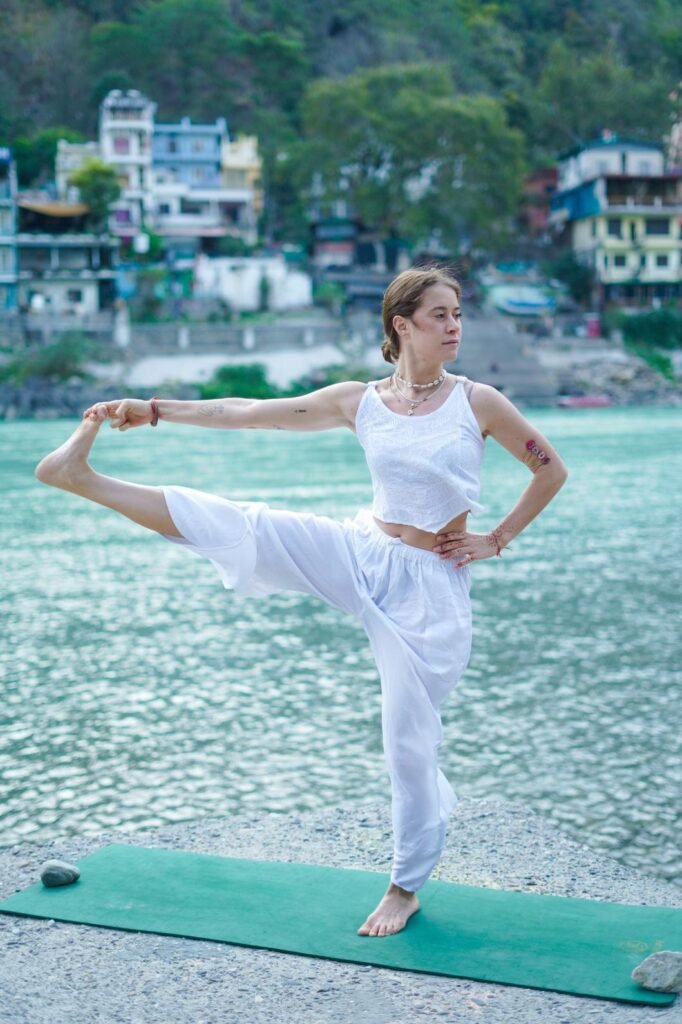
The name Natarajasana originates from Lord Shiva’s cosmic dance, depicted as Nataraja. In this pose, the body simultaneously displays strength, balance, and grace.
Finding stillness within movement is symbolized by this deep backbend and balancing pose.
The posture fuses ease with effort, like a dancer. Some days bring strength and stability; other days, the pose may falter. This natural, in turn, teaches patience.
Steps to Practice
- Begin in Tadasana (Mountain Pose)
- Shift weight onto your right foot.
- Bend your left knee and bring the heel towards your buttock.
- Reach back with your left hand to hold your ankle or foot.
- Keep both knees close together at first.
- Slowly press your lifted foot backward and upward while reaching your right arm forward.
- Lift your chest and lengthen your spine as you balance.
- Hold the pose for 5-10 breaths.
- Release and return to Mountain Pose on the other side.
Variations of Dancer Pose
With support: To maintain balance, rest one hand on a wall or grasp the back of a chair.
Using a strap: To reduce strain, wrap a strap around the raised foot and hold it in place.
Advanced variation: To increase the stretch, catch the raised foot with both hands while lifting the elbows upward.
Benefits
Strengthens leg, ankle, and core muscles, promoting improved stability and also muscular endurance in the lower body.
- Expands flexibility by opening the hips, lengthening the shoulders, and also broadening the chest, which can improve upper body posture.
- Improves spinal flexibility through the backbend, which can contribute to a greater range of motion.
- Decreases back stiffness and tones the thighs, supporting both comfort and muscle tone in these regions.
Refines mental focus and physical balance, requiring concentration on bodily alignment and movement.
- Increases patience and self-assurance.
- Heightens body awareness during movement.
Contraindications of Dancer Pose
Avoid this pose if you:
- Sustain wounds to the knees, hips, shoulders, or spine.
- Had these areas been operated on recently?
- Have suffered from arthritis or vertigo.
- Feel lightheaded or have extremely low blood pressure.
- Stop and take a break if you experience pain or instability. If you have any medical conditions, always practice under the supervision of a qualified professional.
Practice the following to get ready for Dancer Pose:
- Low Lunge (Anjaneyasana)
- Warrior III (Virabhadrasana III)
- Bow Pose (Dhanurasana)
- Camel Pose (Ustrasana)
- Tree Pose (Vrksasana)
Counter poses after Dancer include:
- Forward Fold (Uttanasana)
- Downward Dog (Adho Mukha Svanasana)
- Child’s Pose (Balasana)
They release spinal tension and relax the body.
Body Awareness in Yoga Poses: Insights from Dancer Pose
In Dancer Pose, many muscle groups work together. The quadriceps, calves, and ankle muscles are strengthened by standing, which also improves balance and stability.
The raised leg works the glutes and hamstrings while stretching the thigh and hip flexors. However, the spine sags back, and the shoulders and chest expand. The straight knee should not splay outward; rather, it should remain near the midline. This avoids strain and guarantees stability.
Bringing It Together: Mountain and Dancer Pose
Mountain Pose and Dancer Pose may seem quite different—one is grounded and steady, the other active and fluid—but together, they express similar foundations. Practicing Mountain Pose invites grounding, alignment, and breath connection. Dancer Pose adds grace, flexibility, and concentration to this foundation.
This dual practice can be a powerful way to find balance between quiet and action, strength and space, and doing and undoing.
Exploring Yoga Poses in Bali
For anyone inspired to delve deeper into their yoga practice, Bali offers an ideal environment of natural serenity. However, Mira Yogashala is often regarded as one of the premier yoga schools in Bali, where students from around the world gather to learn and grow.
As a dedicated Bali yoga school, it combines traditional knowledge with encouraging instruction to help students refine their yoga poses and deepen their understanding of yoga philosophy. However, the experience of practicing in Bali adds a special depth to the journey, regardless of whether you join for training or personal development.
Conclusion
Yoga is not about creating perfect shapes; it is also rooted in awareness and mindfulness. Mountain Pose reminds students to embody a sense of groundedness and steadiness. The Dancer Pose shows us that balance and beauty can coexist as we move. However, both offer lessons for the mat and for daily life: stand tall, stay steady, and also move with grace.
Here, whether you are new to practice or a seasoned veteran, these poses invite you to take the time to acquaint yourself with your body and discover your inner strength.

